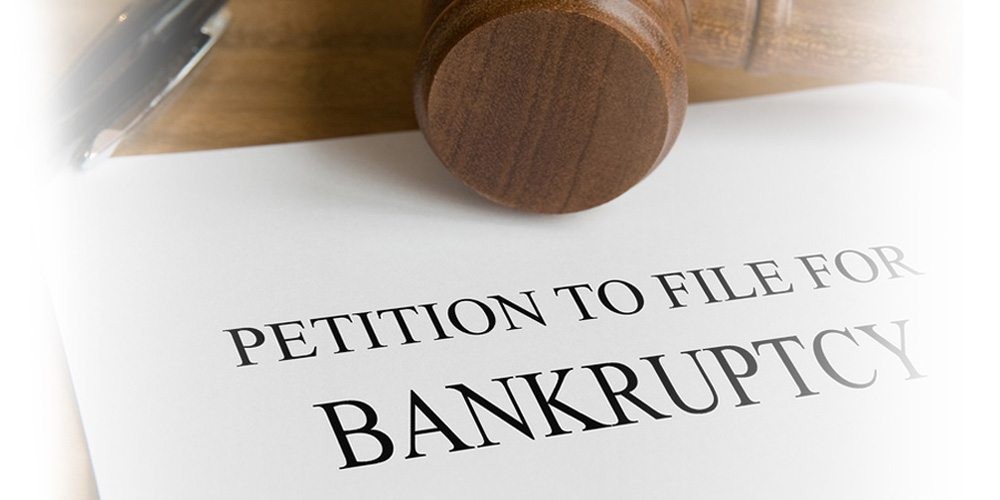Homes, vehicles, and other property are cornerstones of our everyday lives. So, too, are the debts that we incur to in order to purchase those pieces of property. If you are among the fortunate few that make all of your purchases in cash and you are bereft of debts, then this article is not for you. If, however, you are like the majority of Americans that carry some kind of debt balance, you are likely all-to-familiar with the strategic planning and decision-making that underpins each of those purchase decisions. Sometimes, no matter how hard we work or hard we try, financial difficulties arise to make filing for bankruptcy protection a smart strategic option. For those folks, struggling with debts and considering filing for personal bankruptcy protection, this article is for you.
Every bankruptcy case has some manner of precursor – a life circumstance that could happen to anyone and decimate our financial lives. Common precursors include death of a spouse or family member, divorce, job loss or demotion, medical emergencies, and broader economic catastrophes or natural disasters. The consequences can be equally as catastrophic and can bring the potential to lose our property. When left unabated, the common consequences include automobile repossessions, home mortgage foreclosures, apartment evictions, creditor lawsuits, personal property seizures, and frozen bank accounts. The vast majority of my clients were once confused about their options if they were to file for bankruptcy protection and how to make the best strategic choices to keep their property, maximize the benefits of bankruptcy, and minimizing the costs to themselves and their property. This article discusses the most common strategic choices to maximize the benefit of a bankruptcy discharge.
Strategic Choice #1: Timing
Many otherwise well-meaning and honest people struggle so perilously with their debts that a strong breeze would send them into financial ruin. When that tenuous balance is at play, timing your bankruptcy filing is often the most important consideration. I frequently meet with folks who have been served with legal papers. Their mortgage lender is foreclosing on their home, their auto lender is attempting repossession of their vehicle, their landlord is suing to evict them, their credit card company is suing them to collect a past-due balance, or no less perniciously, debt collectors hound them day and night while reporting negatively on their credit report and preventing them from obtaining credit when they need it. These creditor actions add immense stress and pressure that bankruptcy will relieve. Filing for personal bankruptcy protection will allow you to keep and protect your property while also stopping these collection actions. Inarguably, filing your bankruptcy case before your creditor succeeds in foreclosing, repossessing, evicting, or suing will alleviate the pressure swiftly and efficiently. That may not be possible, of course, and not all is lost. Time is of the essence and I always recommend not to delay.
Strategic Choice #2: Pre-Filing Debt Payments
One of the most common questions that would-be debtors ask me is whether they should make their regularly scheduled debt payments if they are filing for bankruptcy. The best strategic decision depends on the classification of the debt and your intent as to the property. If the debt is unsecured (e.g. a credit card, medical bill, or personal loan) and you are certain you will file for bankruptcy, DO NOT make those debt payments. You will not get those monies returned and, if the amounts are significant, it may create what is known as a “preferential transfer”. Further, and perhaps most importantly, you are seeking to discharge that debt through the bankruptcy case. On the other hand, if the debt is secured by a piece of property (e.g. a home mortgage or a vehicle loan), the strategic calculus is significantly different.
Strategic Choice #3: Keeping or Surrendering Property
Strategies in hand for timing and debt payments, the next most common question I hear is how to handle real estate, personal property, and leased property. The strategic decisions here will center on your intent: do you want to retain the property or do you want to rid yourself of the property and the debt attached to it? If you want to keep the home or the vehicle in question, you have the option to redeem the debt and save it. Bankruptcy is a powerful tool redeem property in order to avoid or undo a foreclosure or repossession and cure the delinquent balance to ensure you retain possession. Likewise, bankruptcy will help if your property is leased – like a vehicle or an apartment – through a process called “lease assumption”.
Conversely, you may want to give up a piece of property and rid yourself of the debt associated with it. Bankruptcy is well suited to assist here too. You may surrender property like a home with a mortgage or a vehicle with a loan back to the lender and avoid further liability for the debt while also alleviating yourself of responsibility for the property. In the case of leased property, like and apartment or a vehicle, you have an option to “reject” the lease and achieve a similar end.
Strategic Choice #4: Cosigned Debts
A frequent concern that many of my clients have is the fate of their cosigned debts. Many feel a moral imperative to protect the innocent party who cosigned for them to receive a loan or they cosigned to help someone else. This is a common scenario – plenty of people have credit situations in which lenders will require a cosigner. What many debtors learn too late is that the legal concept of “joint and several” liability applies – and it only protects the lender – to hold each party responsible for one hundred percent of the debt in the event of a default. This can result in negative credit reporting and other financial impacts if not properly addressed.
Bankruptcy has options to handle these debts too. The first step is to determine what level of responsibility you are comfortable accepting for the debt. If you feel a moral imperative, then bankruptcy can help continue those payments and protect the innocent. If, alternatively, your goal is rid yourself of the debt and any property associated with it, bankruptcy can also help. Most commonly, the latter scenario occurs with divorced couples or romantic partners who shared finances.
Debts are a part of life that very few of us can live without. When the worst happens and you feel like you have nowhere else to turn or you are otherwise facing the loss of your property, bankruptcy will always be a viable and strategic option to trim the fat and get you a fresh start in life. Those strategies matter. If life has knocked you down, develop a clear set of goals and discuss with a reputable attorney to determine your options. The experienced, proven, and trusted bankruptcy attorneys at Mooney Law stand ready to assist you and answer your questions. Consultations for bankruptcy are always free at Mooney Law. To schedule a FREE consultation, call us today at 833-MOONEYLAW or at 717-200-HELP. You can also visit the firm website at https://www.mooney4law.com.



